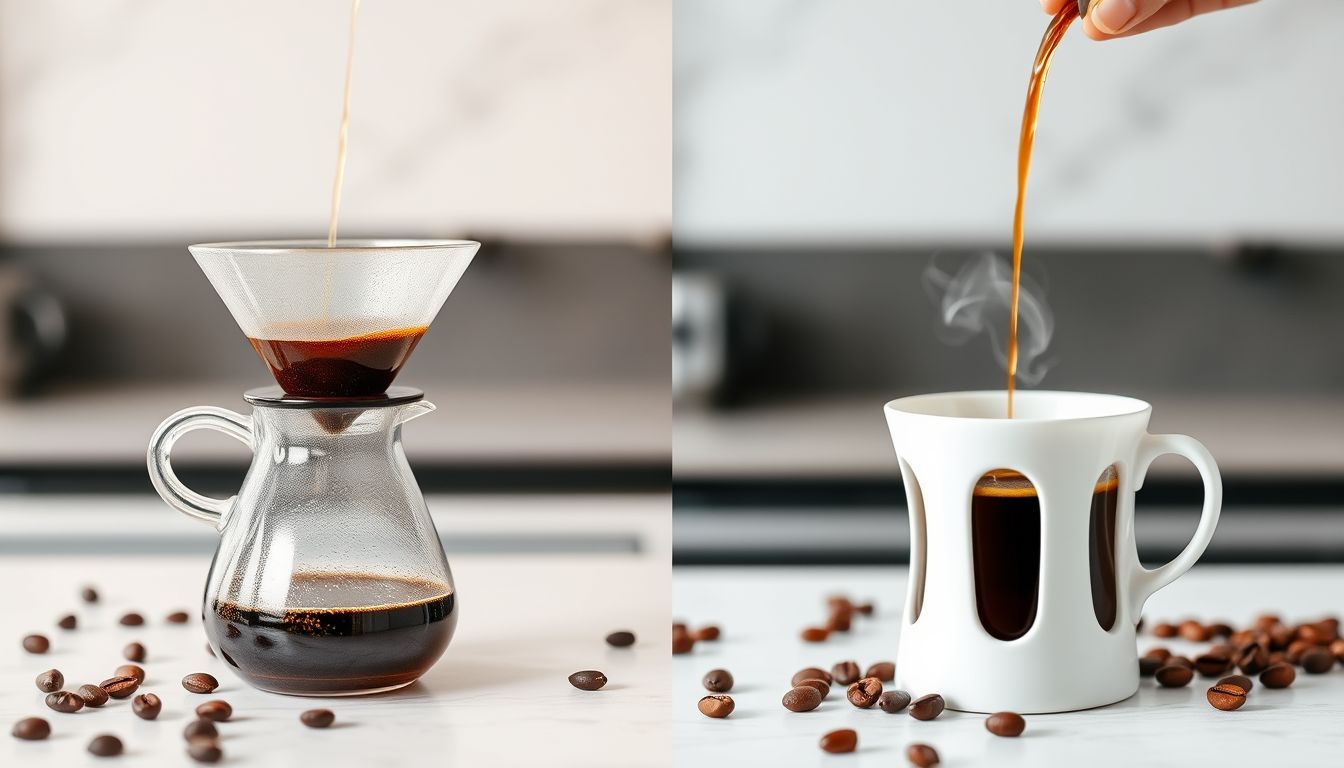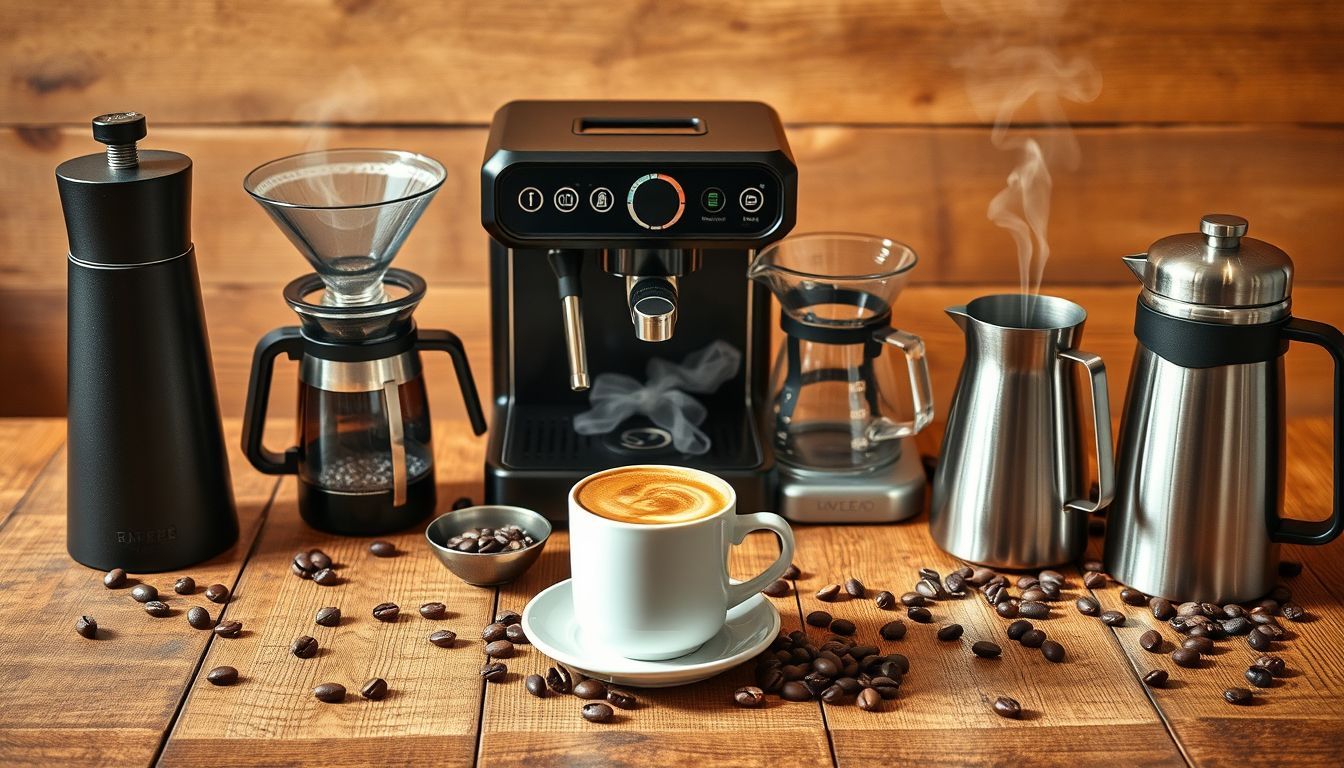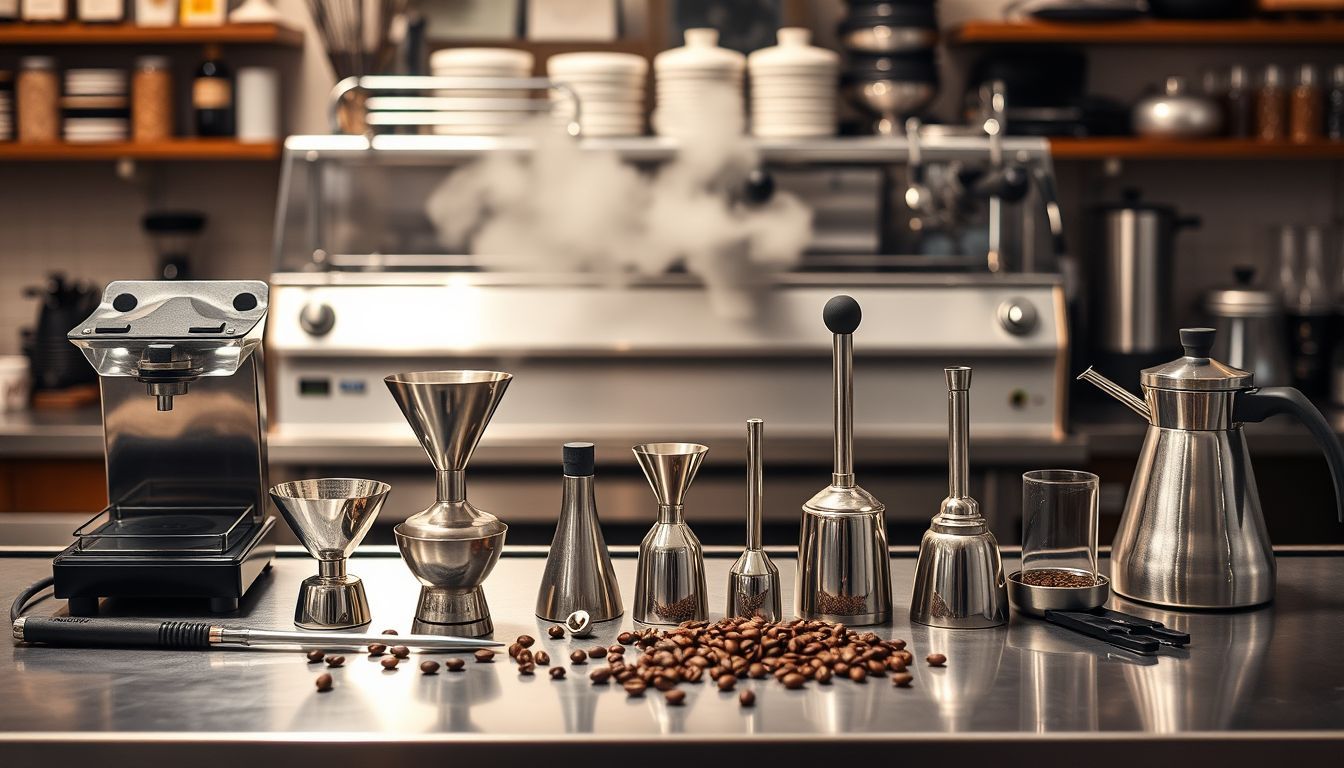Why Glass vs Plastic Coffee Equipment Actually Matters (And When It Doesn't)
The glass vs plastic debate goes beyond aesthetics. Discover how material choice affects flavor, durability, and brewing performance in your coffee equipment.

Amazon Affiliate Disclosure
This post contains affiliate links. If you purchase through these links, we may earn a small commission at no additional cost to you.
Last week, I watched a heated debate unfold in a coffee forum about whether plastic pour-over drippers could possibly make coffee as good as their glass counterparts. The glass advocates spoke of “purity” and “thermal mass,” while plastic defenders cited durability and identical extraction results. Both sides seemed convinced that material choice was either critically important or completely irrelevant.
As someone who has conducted side-by-side tastings with identical coffee using glass and plastic versions of the same equipment, I can tell you the truth is more nuanced than either camp wants to admit. Material choice does matter—but not always in the ways people think, and definitely not in every brewing scenario.
The glass versus plastic debate touches on chemistry, physics, psychology, and practicality. It’s about thermal properties and flavor neutrality, but also about perception and ritual. Understanding when material choice actually affects your coffee—and when it’s just expensive aesthetics—can save you money and improve your brewing decisions.
Today, we’re diving deep into the science behind coffee equipment materials, examining real-world performance differences, and building a framework for when to choose glass, when to choose plastic, and when it genuinely doesn’t matter.
The Science of Material Properties in Coffee Brewing
Before we can evaluate glass versus plastic performance, we need to understand how material properties affect the brewing process.
Thermal Characteristics
Heat Capacity and Thermal Mass
Glass has significantly higher thermal mass than plastic, meaning it absorbs and stores more heat energy. When you pour hot water into a glass brewing device, some energy goes into heating the glass itself, potentially lowering the water temperature slightly.
Plastic, with lower thermal mass, absorbs less heat from your brewing water. In theory, this means more thermal energy remains available for coffee extraction.
Thermal Conductivity
Glass conducts heat more readily than most plastics, meaning it can both absorb heat from your water and lose heat to the environment more quickly. Plastic’s lower thermal conductivity provides better insulation, potentially maintaining brewing temperature longer.
Real-world impact: In practice, these differences are measurable but often negligible. A 2-3°F temperature difference rarely affects extraction noticeably, especially in quick brewing methods like pour-over.
Chemical Interactions
Flavor Neutrality
High-quality borosilicate glass is chemically inert—it doesn’t react with coffee compounds or leach flavors into your brew. This neutrality is why glass is preferred for laboratory equipment and wine storage.
Quality food-grade plastics (like those used in the AeroPress Original Coffee Press) are also designed to be flavor-neutral, though the chemistry is more complex.
Absorption and Retention
Plastic can absorb coffee oils and aromatic compounds over time, potentially affecting flavor in subsequent brews. Glass doesn’t absorb these compounds, maintaining consistent performance indefinitely.
The caveat: This absorption effect is primarily relevant for equipment that sees repeated use without thorough cleaning, and mainly affects delicate flavor notes rather than overall coffee quality.
Surface Properties
Porosity and Cleaning
Glass surfaces are non-porous and easy to clean completely. Plastic surfaces may have microscopic porosity that can harbor coffee residues and oils.
Scratch Resistance
Glass maintains smooth surfaces indefinitely, while plastic can develop scratches that create additional surface area for residue buildup.
Real-World Performance Testing
Controlled Brewing Experiments
I’ve conducted extensive side-by-side testing using identical coffee, grind settings, and brewing techniques with glass and plastic versions of popular equipment.
Hario V60: Glass vs Plastic
Setup: Same coffee (Ethiopian Yirgacheffe), same grind (medium-fine), same pouring technique, same water temperature (205°F).
For these tests I used both the plastic model and the Hario V60 Ceramic Coffee Dripper in glass, size 02.
Results:
- Extraction yield: Virtually identical (measured via refractometer)
- Temperature retention: Glass version 2°F cooler after 4-minute brew
- Taste difference: Minimal in blind tastings
- Consistency: Both versions produced repeatable results
Conclusion: For V60 brewing, material choice has negligible impact on coffee quality.
French Press: Glass vs Stainless Steel vs Plastic
Setup: 4-minute immersion brewing with identical parameters.
Equipment included a Bodum 34 Oz Brazil French Press.
Results:
- Temperature retention: Stainless steel > plastic > glass
- Flavor clarity: Glass ≥ plastic > stainless steel (slight metallic notes)
- Extraction consistency: All three performed similarly
Conclusion: Material choice affects temperature retention significantly, but flavor differences are subtle.
Chemex: Glass Only (But Instructive)
The Chemex is only available in glass, but its design illustrates why material choice can matter for specific brewing methods. I used the Chemex Pour-Over Glass Coffeemaker.
Thermal mass effect: The thick glass absorbs significant heat, requiring water temperature adjustment for optimal extraction.
Design integration: The glass construction enables the Chemex’s specific filter design and pouring characteristics.
Long-Term Use Testing
Flavor Retention Over Time
After 6 months of daily use:
- Glass equipment: No detectable flavor changes or residue buildup
- High-quality plastic: Minimal changes, occasional deep cleaning restored neutrality
- Lower-grade plastic: Noticeable coffee oil absorption, affecting delicate flavors
Durability Comparison
- Glass: Excellent performance until catastrophic failure (breaking)
- Plastic: Gradual degradation through scratching and potential warping
- Practical lifespan: Glass (indefinite until broken) vs Plastic (5-10 years with heavy use)
When Material Choice Actually Matters
Scenarios Where Glass Excels
- Long immersion brewing (French press, cold brew)
- Delicate, light roasts and single-origin coffees
- Aesthetic and ritual considerations
- Professional or commercial use
Scenarios Where Plastic Excels
- Durability requirements (travel, camping, children)
- Temperature-sensitive brewing (quick pour-over methods)
- Budget considerations
- Learning and experimentation (anxiety-free handling)
Material Choice Is Irrelevant When
- Quick brewing methods (under 4 minutes) with quality equipment
- Dark roasts and milk-based drinks where subtle flavor differences are masked
- Casual consumption where convenience outweighs optimization
The Psychology of Material Perception
Expectations, ritual satisfaction, and social signaling all play a role in how we perceive equipment. A well-executed pour-over with a COSORI Electric Gooseneck Kettle might taste better simply because the process feels elevated.
Environmental Considerations
Glass often has a lower environmental impact over decades of use due to recyclability and indefinite lifespan, despite higher production energy costs. Plastic’s lower initial cost is offset by its limited lifespan and recycling challenges.
Cost-Benefit Analysis
For most home brewers, technique and bean quality matter far more than glass versus plastic. However, if you’re optimizing every variable, a strategic mix of materials can help:
- Use glass for delicate profiles and immersion methods.
- Use plastic or stainless steel for travel gear and durable applications.
- Integrate ceramic and metal where design, heat retention, and neutrality align with your priorities.
Maintenance and Care Differences
Glass demands careful handling but is dishwasher‐safe and chemical‐neutral. Plastic requires gentle cleaning to prevent scratching, UV protection, and occasional deep cleansing to manage oil absorption.
Conclusion: Material Pragmatism Over Dogma
The glass versus plastic debate in coffee equipment is neither as critical as purists claim nor completely irrelevant. Material choice matters in context, but focus first on fundamentals: technique, fresh beans, proper grind size, and clean equipment. Then optimize with glass, plastic, or metal based on your needs—whether that’s an elegant Chemex ritual, a rugged AeroPress adventure, or a precise Hario V60 pour-over with a gooseneck kettle.
Choose based on your actual needs, not theoretical ideals. Your coffee—and your wallet—will thank you for the pragmatism.
What’s your experience with glass versus plastic coffee equipment? Have you noticed flavor differences, or do practical considerations drive your choices? I’m always curious about real-world experiences that either confirm or challenge the conventional wisdom.

Sofia Rossi
I started my career in a world of spreadsheets and boardrooms, but I quickly realized the most interesting data was in the way people interacted when the pressure was on. My novels are my way of analyzing the human heart—the messy, complicated, and often hilarious parts. I write about the lives we lead now, with all the love, ambition, and absurdity that comes with it.


